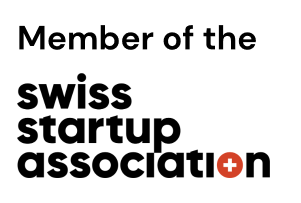As part of the admission process for the MASc programme at the London Interdisciplinary School, applicants are required to write a critical reflection on a phenomenon that can be addressed through interdisciplinary methods. I have decided to write a meta-analysis on how interdisciplinarity is a better alternative to the current education systems. In writing this reflection, I have come to the conclusion that interdisciplinarity is not an approach to education, but rather a model for an education system that is fit for the contemporary world.
Individualism in education
Traditional educational institutions across the UK align their methods of delivering and assessing knowledge to suit individual disciplines. The establishment is inflexible in appealing to cognitive differences among students, who may better adopt knowledge and skills through other modalities (N. D. Fleming, C. Mills, 1992). Through promoting inter-modality in teaching, interdisciplinary education allows for easier consolidation of information and effective expression of ideas among students, and more accurate evaluation of individual reasoning rather than the ability to shape it to standardised formats.
Inter-modality in learning also stimulates abstract thinking, maximising chances of discovering association and pattern emergence between disciplines to creatively approach and expedite complex problem-solving.
Furthermore, traditional education is limited in its resources to adhere to individual learning needs on a teacher-to-student basis. The standard format of lessons, aimed at a large audience, does not allow teachers to retain attention among students equally. An interdisciplinary approach, supported by artificial intelligence interfaces, can design the curriculum in adherence to individual learning abilities and adjust it in real-time, retaining student attention by offering alternative perspectives on information that students could quickly adopt.
Lack of an individualistic approach to content and classroom design results in imbalance between externally motivated students and disengaged students. Reward and reprimand for engaged and disengaged students positively reinforce better performers and negatively reinforce those at the lower end of the traditional academic performance spectrum. By adopting interdisciplinarity, schools can foster a culture of acceptance, placing value on individual differences and further boosting engagement.
Lack of an individualistic approach to content and classroom design results in imbalance between externally motivated students and disengaged students. Reward and reprimand for engaged and disengaged students positively reinforce better performers and negatively reinforce those at the lower end of the traditional academic performance spectrum. By adopting interdisciplinarity, schools can foster a culture of acceptance, placing value on individual differences and further boosting engagement.
In so doing, interdisciplinary schools will cultivate “outside-of-the-box” uniqueness rather than put individuals into one.
Systemic fallacy
The UK education system specialises students from a young age by narrowing disciplines throughout secondary school. However, only a small majority of students have confidence in the field they wish to specialise in at the age of 16 (UCAS, 2021), and few opportunistic alternatives exist for those who are undecided. Interdisciplinary schools in the UK have a large market of 40-47% of students to expand to, yet they will face challenges in competing with traditional specialisation pathways due to systemic rigidity and cemented reputability of the secondary education sector in public discourse.
The mainstream educational establishment only allows for change in curriculum over one whole generation, which is relatively slow compared to the adaptability of other social institutions.
The mainstream educational establishment only allows for change in curriculum over one whole generation, which is relatively slow compared to the adaptability of other social institutions.
The main threat to traditional education is the digital revolution that our civilization faces today.
Previous technological advancements have disrupted the status quo and allowed social institutions to adjust to new norms.
In contrast, the digital revolution will bring about an environment of constant and accelerating change and technological progress, to which education must adapt much more frequently. New disciplines will emerge as a function of growing complexity in the world.
Interdisciplinary education allows for easy integration of emerging disciplines into the curriculum, ensuring adaptability of the educational establishment to transformative global trends.
As we near the singularity point, humanity will need to catch up with autonomous technological evolution or evolve in tandem with it (Figure 1). With the constantly transforming reality being shaped by technological advancements, individuals will have to learn to be morally flexible in adjusting to new social norms quickly. Interdisciplinarity allows for this plasticity by welcoming differing philosophies rather than locking students in narrow avenues of thinking.
As we near the singularity point, humanity will need to catch up with autonomous technological evolution or evolve in tandem with it (Figure 1). With the constantly transforming reality being shaped by technological advancements, individuals will have to learn to be morally flexible in adjusting to new social norms quickly. Interdisciplinarity allows for this plasticity by welcoming differing philosophies rather than locking students in narrow avenues of thinking.

Figure 1: Abstraction of Singularity. Adapted from Medium: ‘The Machine Intelligence Continuum’
Transforming labour market
The World Economic Forum predicts that the global labour market will see a net decrease of 14 million jobs over the next five years, mainly driven by technological advancements in automation (WEF, 2023).
The proportion of tasks automated within a business is expected to grow from 34% today to 42% by 2027. The workplace will experience a higher demand for human-centric qualities such as critical, abstract, and systemic thinking and soft skills such as entrepreneurism, which interdisciplinarity fosters. Moreover, interdisciplinarity offers an in-depth understanding of the phenomenon of emergence, providing a framework for converging and utilising technological capabilities to address challenges.
Interdisciplinarity trains entrepreneurism in students by providing bottom-up understanding of working components, and top-down skills for their integration into complex systems. Interdisciplinary-minded executives better understand their teams’ work and, therefore, set realistic expectations, improve team relations, and build a more efficient organisational structure. Interdisciplinarity also facilitates communication by providing insight into different perspectives, leading to more efficient argumentation, collaboration, and, consequently, problem-solving, essential in the classroom and the workplace.
Interdisciplinarity trains entrepreneurism in students by providing bottom-up understanding of working components, and top-down skills for their integration into complex systems. Interdisciplinary-minded executives better understand their teams’ work and, therefore, set realistic expectations, improve team relations, and build a more efficient organisational structure. Interdisciplinarity also facilitates communication by providing insight into different perspectives, leading to more efficient argumentation, collaboration, and, consequently, problem-solving, essential in the classroom and the workplace.
Progress is driven by increased diversity and strengthened communication within communities. Through diversifying thinking, and promoting empathy, interdisciplinarity cultivates innovation in an educational setting.
References:
Fleming, N.D. and Mills, C. (1992), Not Another Inventory, Rather a Catalyst for Reflection. To
Improve the Academy, 11: 137-155. https://doi.org/10.1002/j.2334-4822.1992.tb00213.x
(Accessed: 2024).
UCAS (2021) WHAT INFLUENCES THE CHOICES SCHOOL LEAVERS MAKE? publication.
UCAS, Rosehill, New Barn Lane, Cheltenham, GL52 3LZ. Pp. 10 Available at: https://
www.ucas.com/file/435551/download?token=VUdIDVFh (Accessed: 2024).
Yao, M. (2017) The Machine Intelligence Continuum, Medium. article. Available at: https://
medium.com/topbots/the-machine-intelligence-continuum-ab6aee686a2d (Accessed: 2024).
World Economic Forum (2023) Future of Jobs. rep., World Economic Forum, 91–93 route de la
Capite, CH-1223, Cologny/Geneva, Switzerland. pp. 25–27. (Accessed: 2024)
Fleming, N.D. and Mills, C. (1992), Not Another Inventory, Rather a Catalyst for Reflection. To
Improve the Academy, 11: 137-155. https://doi.org/10.1002/j.2334-4822.1992.tb00213.x
(Accessed: 2024).
UCAS (2021) WHAT INFLUENCES THE CHOICES SCHOOL LEAVERS MAKE? publication.
UCAS, Rosehill, New Barn Lane, Cheltenham, GL52 3LZ. Pp. 10 Available at: https://
www.ucas.com/file/435551/download?token=VUdIDVFh (Accessed: 2024).
Yao, M. (2017) The Machine Intelligence Continuum, Medium. article. Available at: https://
medium.com/topbots/the-machine-intelligence-continuum-ab6aee686a2d (Accessed: 2024).
World Economic Forum (2023) Future of Jobs. rep., World Economic Forum, 91–93 route de la
Capite, CH-1223, Cologny/Geneva, Switzerland. pp. 25–27. (Accessed: 2024)








